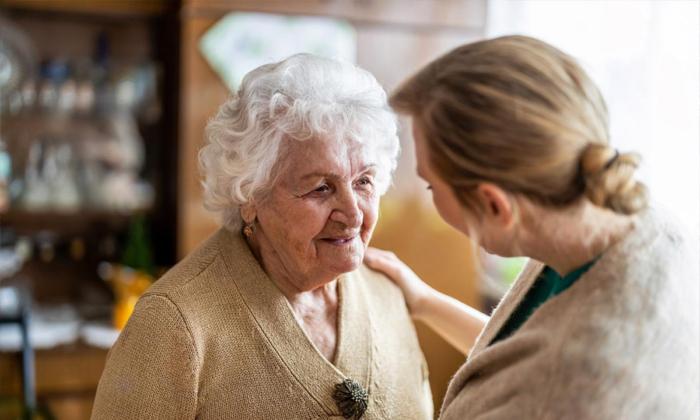In recent years, cloning of deceased pets has become a booming business in China, a market that is rapidly growing despite its high price tag, immature technology, and controversial ethics.
In July 2019, SinoGene, China’s pet cloning bellwether, produced China’s first cloned cat for 250,000 yuan ($37,000). Since then, commercial pet cloning in China is enjoying growing popularity.
The company just opened a new branch in eastern China’s Jiangsu Province, with the plant occupying an area of 27,000 square meters (6.67 acres) and a total building area of 17,000 square meters (4.2 acres).
The initial high price of cloning was unaffordable for most Chinese. But, cloning costs have gone down. The present price tag for cloning a cat is 118,000 yuan (about $17,500), less than half what it was three years ago, according to a SinoGene salesperson.
The price of cloning a pet dog, which varies based on the size of the animal, is currently between 168,000 and 198,000 yuan (about $25,000 to $29,000), which is 50 percent less than the 380,000 yuan (about $56,000) it was in April 2019.
But even the current cloning prices are equivalent to what it would take an average Chinese person 2 to 3 years to earn.
In the past few years, SinoGene has successfully delivered more than 300 cloned pets, including approximately 100 cats and 200 dogs. In addition, more than 1,000 customers have preserved pet cells with SinoGene for future cloning needs.
The pet cloning market in China is becoming highly competitive. In addition to SinoGene, another pet cloning company is PanGene, which is well-known for cloning Purebred Tibetan Mastiff dogs. Some commercial catteries and kennels have also preserved cell lines from cats and dogs and provide cloning services in order to preserve the best breeds.
According to the 2021 white paper on China’s pet industry, the total number of pet dogs and cats in China exceeded 112 million last year, and in urban areas across the country, the pet cat and dog consumption market increased from 206.5 billion yuan (about $30.56 billion) in 2020 to 249 billion yuan (about $36.85 billion) in 2021, an increase of 20.6 percent.
The pet market in China has grown further during the COVID-19 pandemic, as pets provide important emotional support to people during difficult times.
Mixed Feelings When Owners See Their Cloned Pets
Stories from cloning companies and the media reveal that most people chose to clone their pets because they hoped to retrieve lost memories and companionship. However, cloned animals, no matter how sophisticated the technology, are not guaranteed to be 100 percent identical in appearance. Moreover, the cloned pet does not possess any past memory of its “parent.” It is essentially a different individual.In July 2019, China’s first cloned cat, whose name was Garlic, was born. But its owner, Huang Yu, admitted that he was a little disappointed when he saw a video of the animal. This cloned cat and the original “Garlic” looked different in many ways, and the black garlic clove-shaped markings were missing from the cat’s jaw, even though a third-party agency confirmed that the DNAs of the two cats were identical.
More importantly, the new Garlic did not respond to him like an old friend as he had expected it would when they first met.
Unavoidable Ethical Issues
Currently, there are no laws in place to regulate pet cloning or pet surrogacy; still, there are moral and ethical pressures.Dr. Yang Guiyuan, a Japan-based researcher in the veterinary clinical and pathology field for many years, told The Epoch Times that the physical body of a human or animal has a higher and more microscopic aspect. Westerners call it “soul” and Chinese call it “Yuanshen” or primordial spirit. From this point of view, the cloned animal, no matter how similar its appearance, is an independent life.
“In addition, scientific and technological means may introduce genetic defects. If the cloned animal keeps reproducing for a few generations, will it end up producing a genetic monster in the end? It’s hard to say,” Yang said.
As of today, there are still many problems in cloning technology that need to be resolved. The low success rate also increases the number of animals needed in the cloning process, and some of these animals may be subjected to inhumane treatment.
For example, when China’s first cloned cat was finally produced, at least 40 eggs from 5 cats were used and implanted into 4 surrogate cats. Retrieving eggs from the mother cats and implanting embryos into the surrogate cats all involved surgical procedures.
Pioneers in Animal Cloning Exit the Practice
Unlike China’s booming pet cloning business, Roslin Institute in the UK, which produced the world’s first cloned sheep, Dolly, no longer does animal cloning. In the United States, BioArts, a company in Northern California, offered dog cloning services in 2008, but closed the business one year later.“We do not clone animals anymore. The technique has a very low success rate. Dolly was the result of many months of research involving a highly skilled team,” Roslin Institute explained on its website.“What are the risks associated with cloning? Cloned embryos are more likely to be lost during pregnancy than normal embryos, which accounts for the low success rate of cloning. Large Offspring Syndrome (LOS) can also affect some cloned animals. Animals with LOS have growth defects and are considerably larger at birth than animals resulting from natural matings.”
“I couldn’t care less if the cloning business world collapses, but I care about suffering,” Lou told the Mirror’s reporter.
Dr. Yang believes that the commercialization of pet cloning in China is a practice that violates the laws of nature and ethics for financial benefits. “These people think they can manipulate life casually and have no respect for life,” he said.





